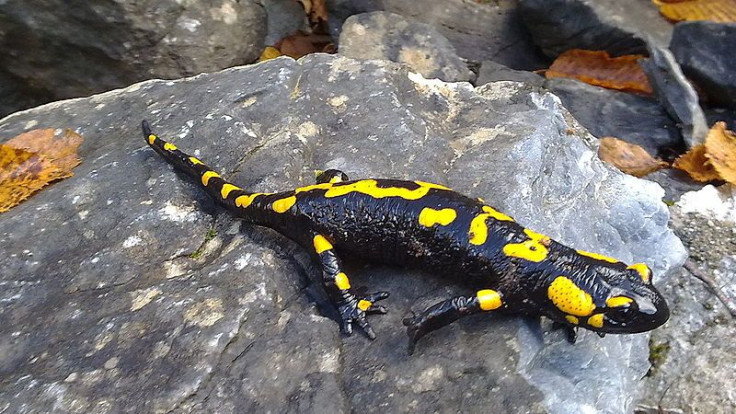US Salamanders ‘Shrinking?’ Study Suggests ‘Clear’ Correlation To Climate Change

Salamanders in the U.S. won’t have a problem staying trim through the summer, although it won’t be thanks to a trendy new diet. Evidence suggests that North American salamanders are shrinking, and scientists are pointing to global warming as the reason.
Researchers studying the difference in the size of Appalachian Mountain salamanders over the past 50 years say the lizard-like amphibians are smaller today than they were in the 1950s. As their surroundings have gotten warmer, salamanders have been forced to burn more energy, resulting in salamanders that are 8 percent smaller than their relatives were a few decades ago.
Like putting Shrinky Dinks in an oven, salamanders tend to lose body size in warm environments, according to the study published in the journal Global Change Biology. Because salamanders are cold-blooded, their metabolisms speed up as temperatures rise. This causes them to burn more energy doing the same activities.
“This is one of the largest and fastest rates of change ever recorded in any animal,” Karen R. Lips, an associate professor of biology at the University of Maryland and lead author of the study, said in a statement. “We don’t know exactly how or why it’s happening, but our data show it is clearly correlated with climate change.”
Researchers studied salamanders from 78 sites in Maryland, Virginia, Tennessee, North Carolina and West Virginia. The animals were collected in the summer of 2011.
They compared these salamanders to museum salamanders collected between 1957 and 2007. They found that, save for one species that slightly increased in size, the majority of the salamanders shrank by an average of 1 percent each generation.
The team also assembled data about the animals’ location and the elevation, temperature and rainfall in those areas over time. It discovered that individuals were smallest further south, where temperatures rose and rainfall fell the most during the 55-year span.
Although their environment changed, salamanders maintained their same routines. Researchers noted that to make up for the extra energy burned by higher metabolisms, salamanders spent more time foraging for food or resting in ponds, and less time hunting for mates.
"Body size is a really, really important factor for most animals," Lips told the BBC. "Bigger animals in general tend to get more mates, they have more offspring, they tend to win in any sort of battles -- whether it's courtship or territorial behaviors."
The new study of shrinking salamanders gives credence to the theory that as global temperatures rise, animals tend to get smaller. And according to research from 2011, it’s not a new phenomenon.
Scientists have found that during past periods of global warming, everything from beetles, bees and spiders to gophers and wood rats shrank, as witnessed in the fossil records of those species.
© Copyright IBTimes 2025. All rights reserved.






















